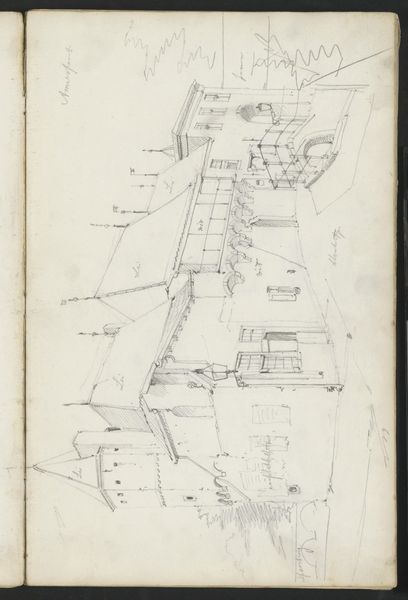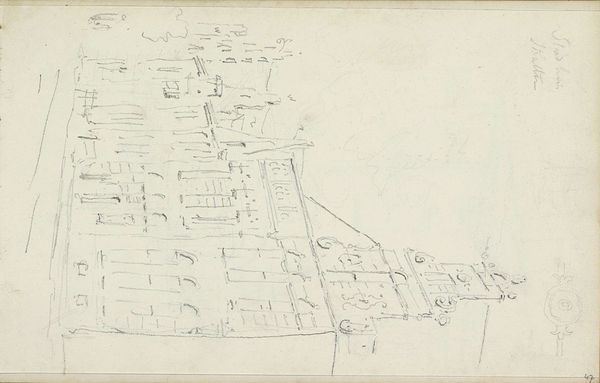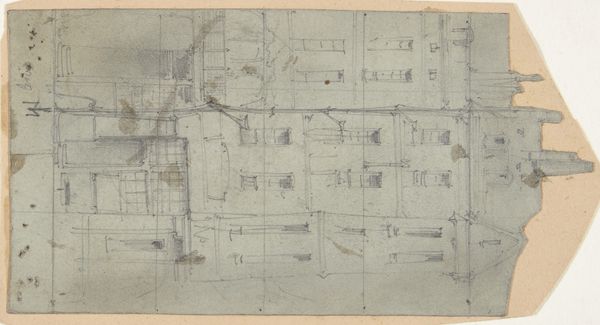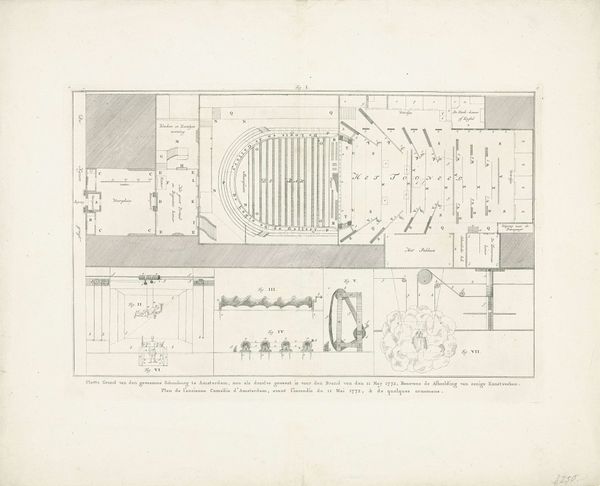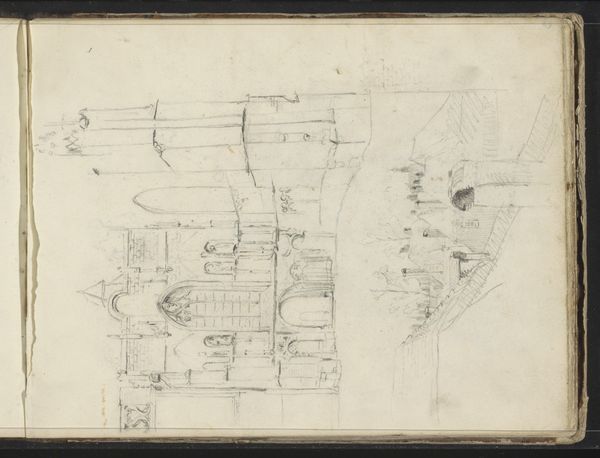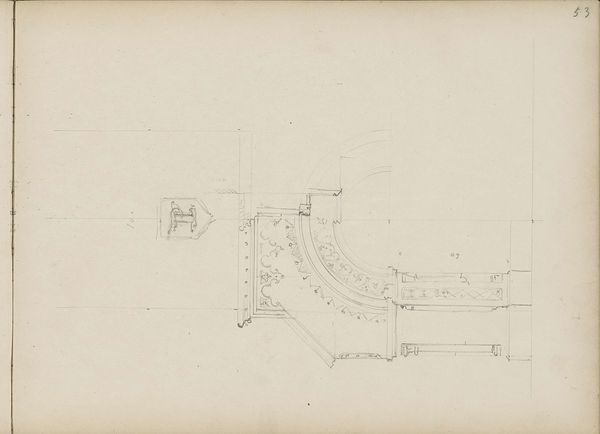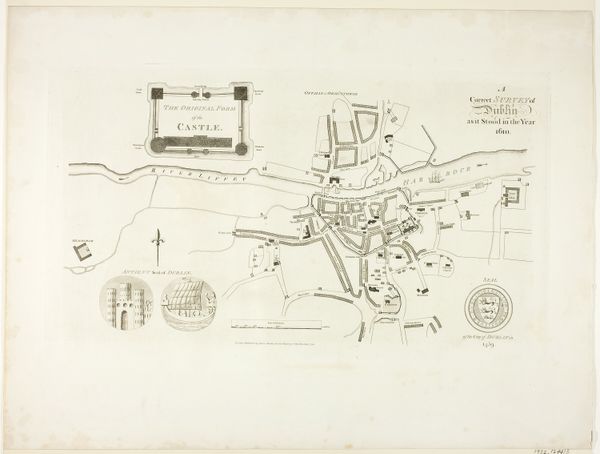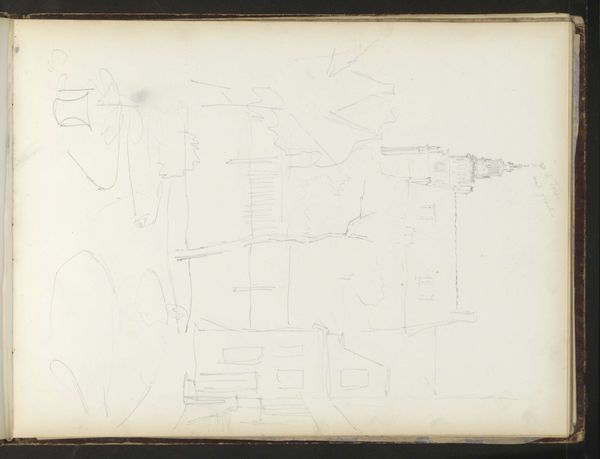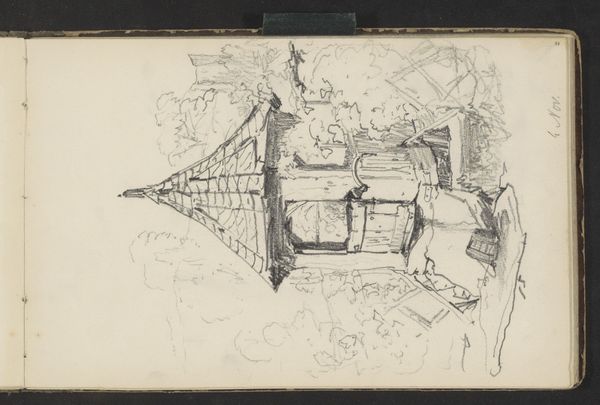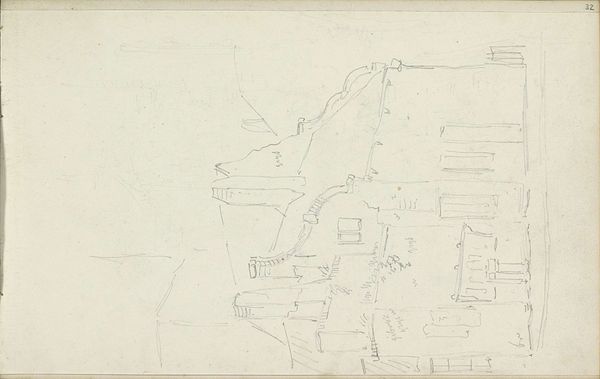
Copyright: Rijks Museum: Open Domain
Curator: Adrianus Eversen's "Studies van de Admiraliteitspoort in Hoorn," likely created between 1828 and 1897, presents us with a delicate pencil drawing on paper. Editor: Delicate indeed, but almost hauntingly sparse. It feels like an architectural ghost, sketched lightly onto the page. The lack of heavy lines gives it an ethereal quality. Curator: The composition draws the eye systematically through a visual deconstruction of architectural form. Note the geometric shapes contrasting against more ornate, curving embellishments—a fascinating dance of structure and ornamentation. Editor: I'm struck by the repetitive use of linear elements. It speaks to the labor-intensive processes of crafting and implementing these features into actual structures. I wonder who exactly were the people involved in the shaping of those stones and the forging of that ironwork? Curator: An interesting consideration. Semiotically, the shapes point toward order and human control over the natural landscape— the gateway, for example, denotes entry, boundaries. These geometric forms serve to delineate interior from exterior spaces. Editor: I would counter that it shows an investigation into the physical limits and potential of building materials like stone, timber, and iron. Also, notice the handwriting; it reminds us that a person stood here, viewing this structure in order to commit its essence to paper. It’s another act of labor recorded right there in the work itself. Curator: Your perspective on labor is valuable. From a purely formal viewpoint, it presents us with balanced tensions that create harmony on a single plane; a study of contrasting elements carefully organized on the surface. Editor: In reflecting on Eversen's preparatory methods, I'm made aware of how buildings have long required skilled craftspeople from various socioeconomic classes—far removed from mere aestheticism. It compels us to examine the societal relations imbedded in these objects. Curator: Considering all these elements—formal structure, materials, and cultural interpretations—provides a broader framework for perceiving how a simple pencil drawing informs understanding of built spaces. Editor: Yes, understanding how a built environment reflects its people remains a central challenge.
Comments
No comments
Be the first to comment and join the conversation on the ultimate creative platform.

